In Samarkand, there are two very interesting production - a small workshop for making silk paper and carpet factory.
Silk paper, used before the discovery of cheaper paper made from cellulose. Its production - still a manual process, so it is more expensive and used mainly for decorative purposes.

Carpets are made fully by hand. Prices are starting from a few thousand dollars.
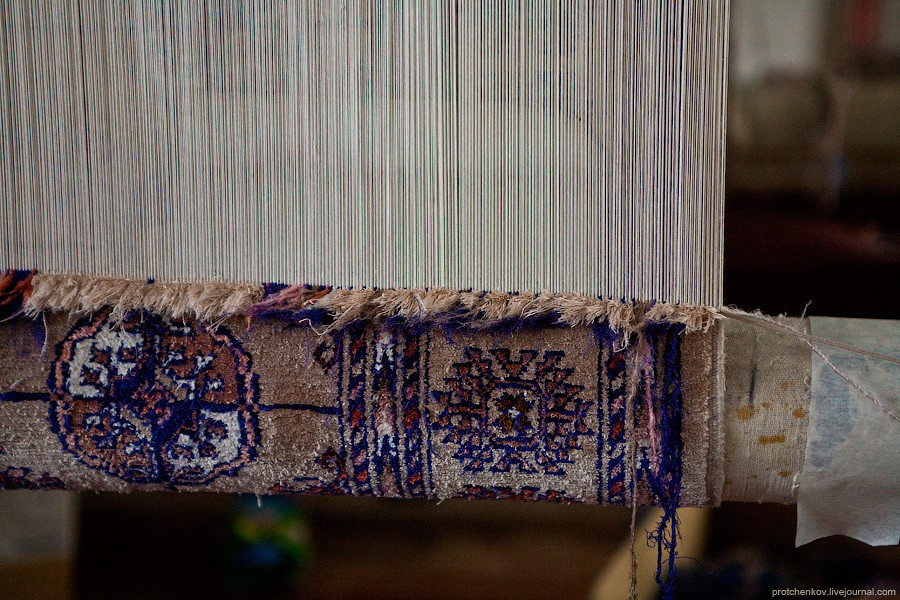
Let's start with the paper. First, from the branches of the mulberry tree (the same, eats the leaves of which the silkworm, and then scat silk thread), remove the crust and remove the upper dark layer.
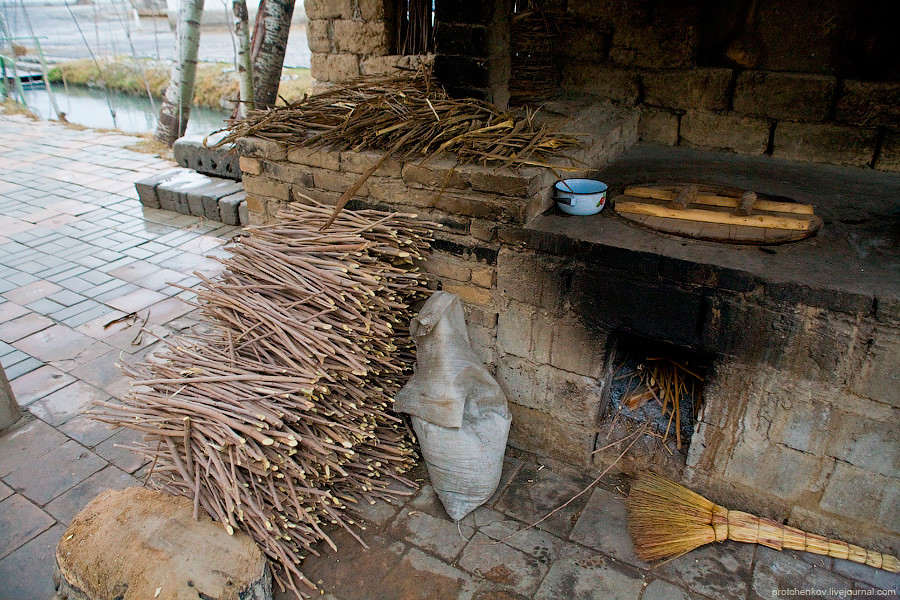
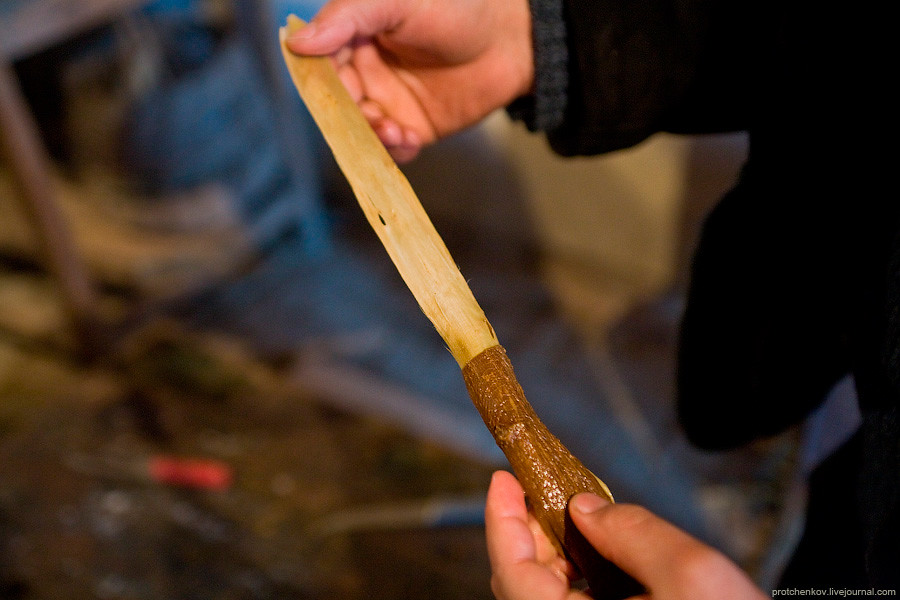
Then the bark is boiled for a long time in the vats, so that it becomes soft.
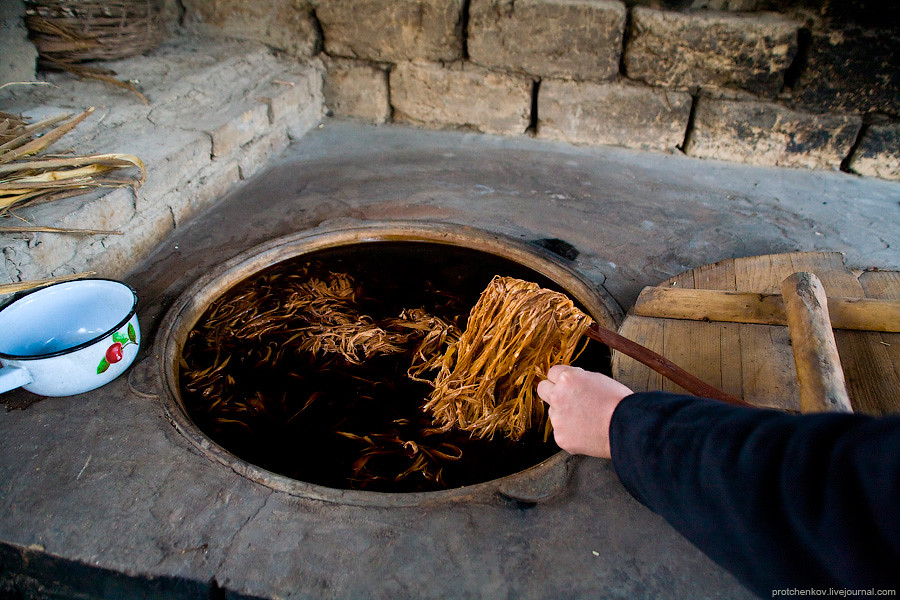
Softened by boiling the bark tolkut in a mortar to a state of porridge.
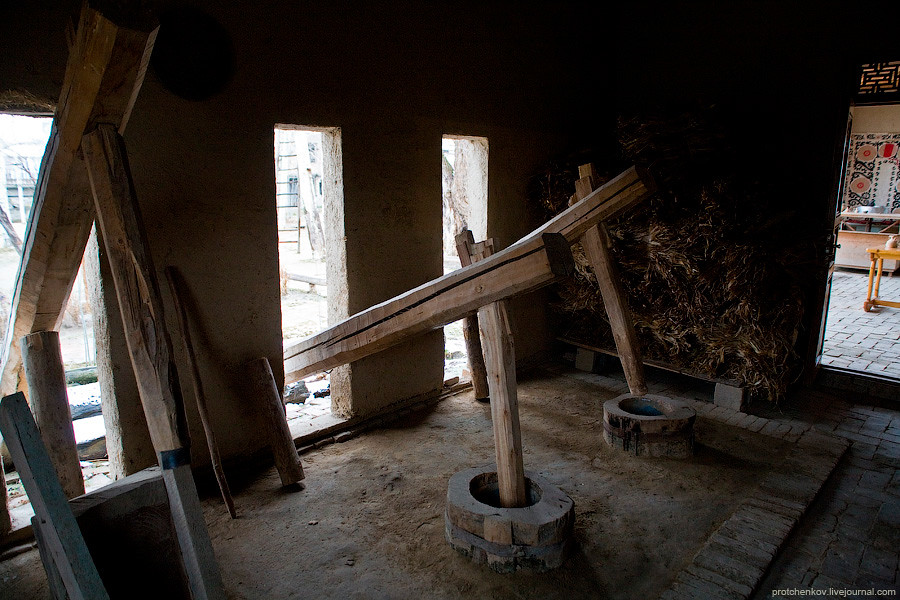
The mechanism is driven by a large shaft under the action of water flow in the creek. See the wheel at the far end? It is half submerged in water. Also thought lubrication system with water. This is a long thin beam to the main shaft - trough for water. It lubricates the friction of wood.
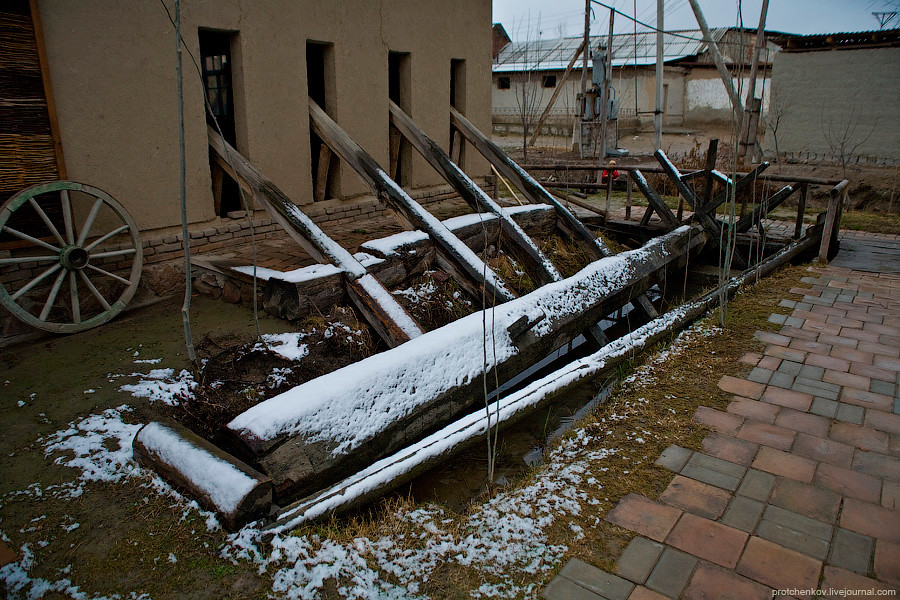
Porridge crust is dissolved in a large tub with water, and water and then sifted through a sieve.
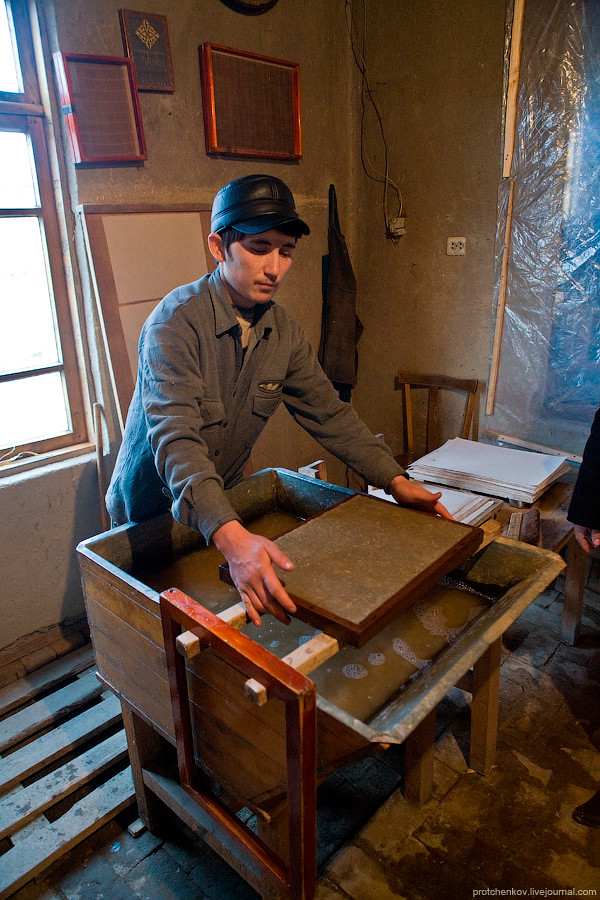
As a result, a sieve is a thin, uniform layer of a future paper.
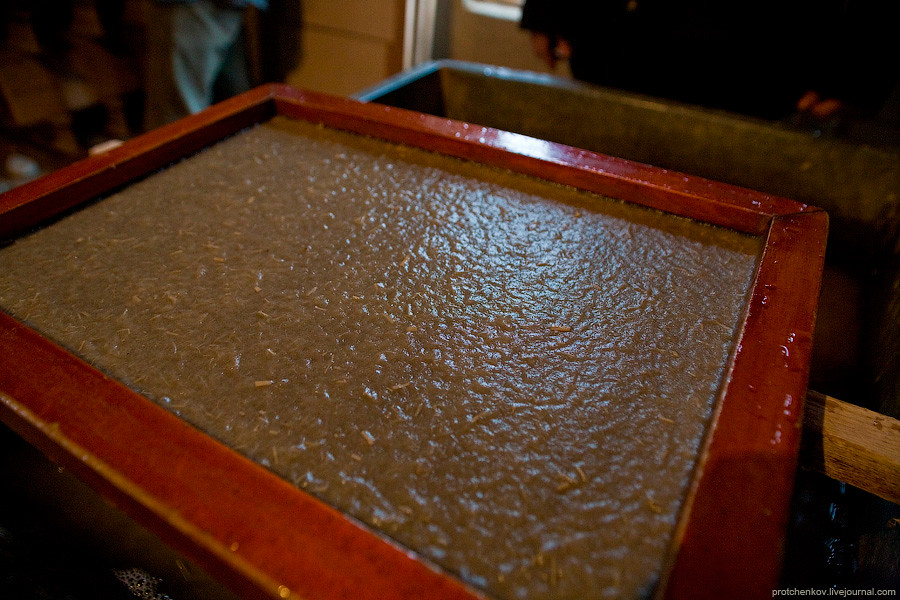
Wet yet nedolist nedobumagi just shake with a sieve.
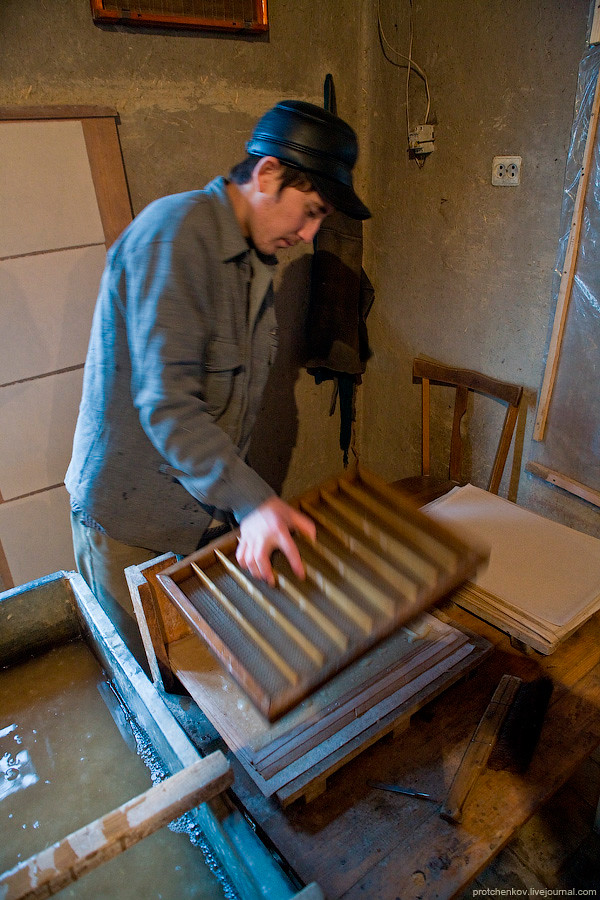
These are the pieces of flattened and placed under the press for several days.
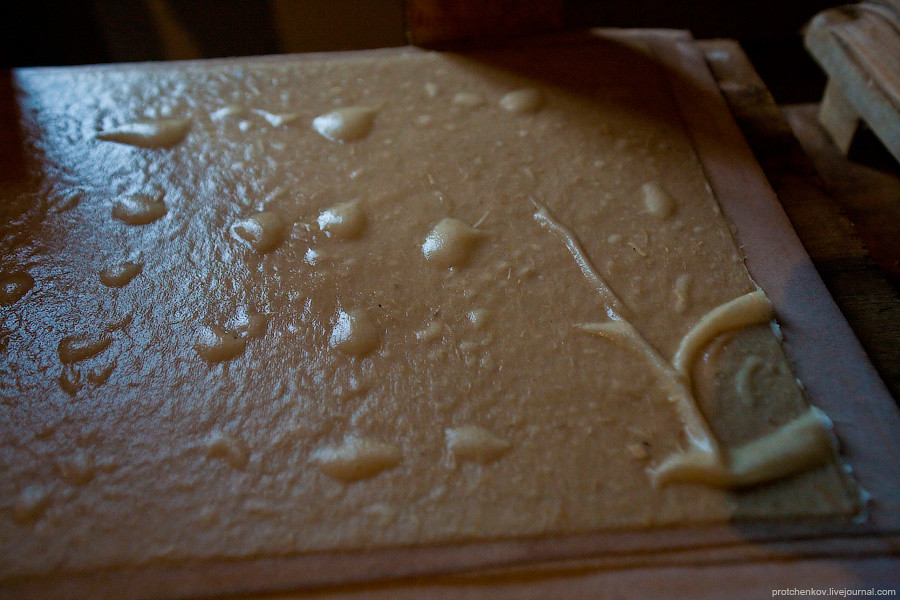
Paper from under the press out here like that. Now it is very rough. Therefore, it is sanded.

Grind large seashell.
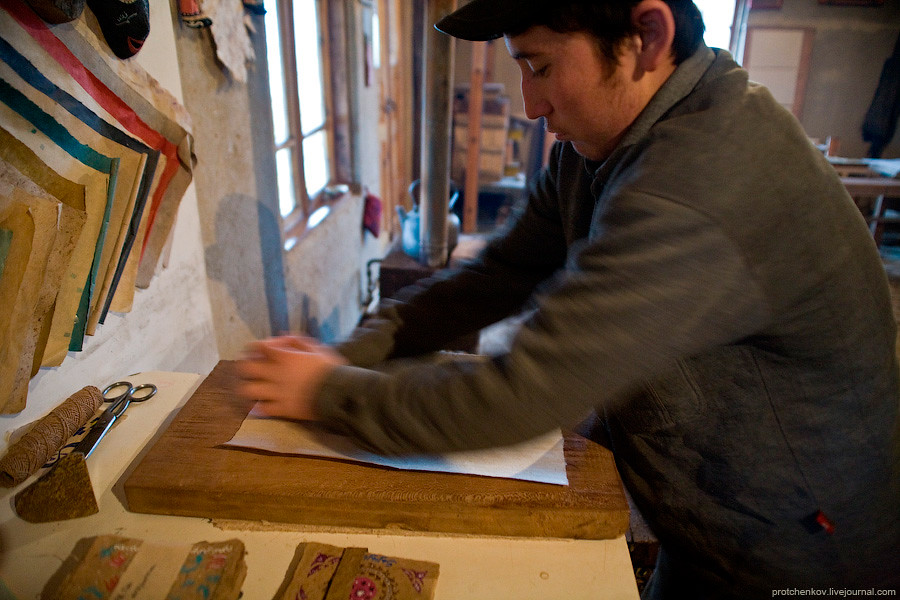
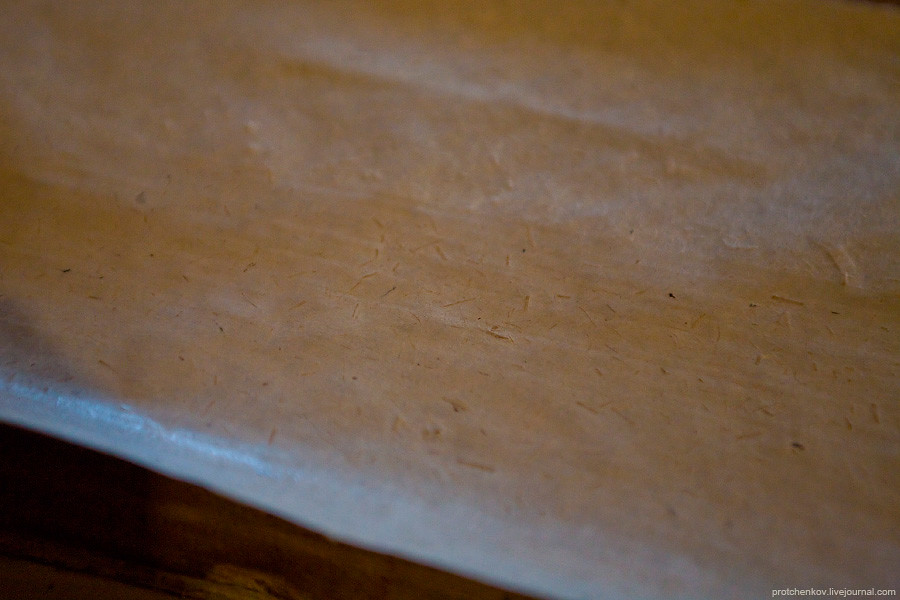
Oem manufacturing small. Doing all sorts of paper crafts and prints at her book. They say that it serves dolshe than plain paper - about 200 years.
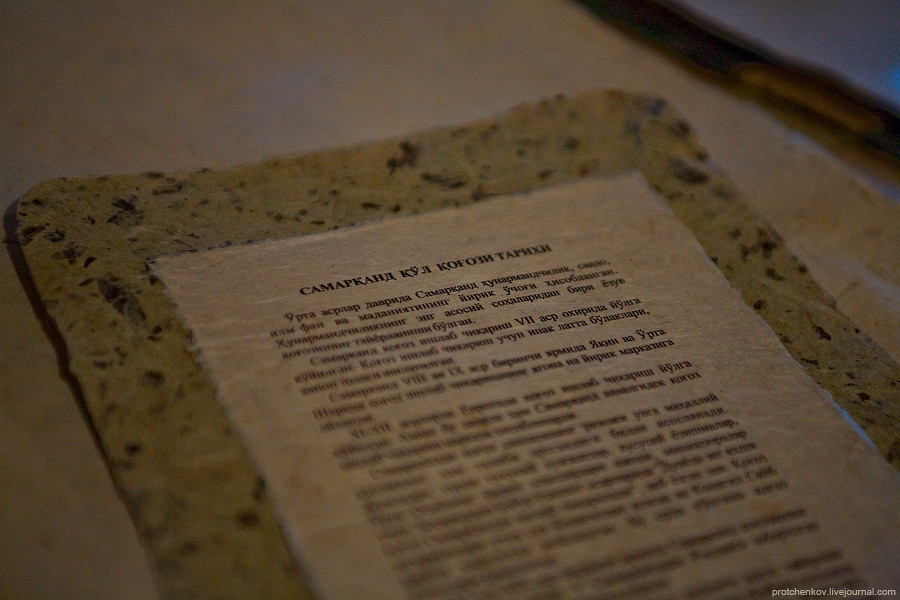

Now go to the carpet factory.

In the left bowl, silk cocoons. Cocoons - from woolen yarn, which wrapped itself when silkworms pupate. But pevratitsya gusinitsy of a butterfly they are not allowed. These cocoons are boiled for several hours, otcheno caterpillar dies, and a cocoon it becomes easier to unravel. Such is life.
In the other bowls - something with which then dyed silk. All natural dyes - some roots and leaves.
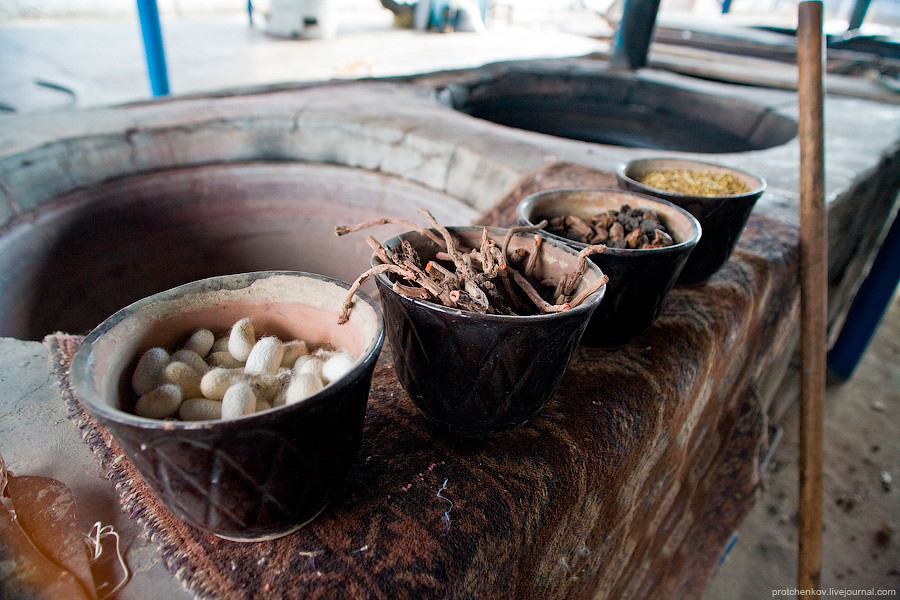
Here is the caterpillar. When the cocoon untangle from one obtained by a thin thread of a length of hundreds of meters. From this thread has spun a very strong silk rope.
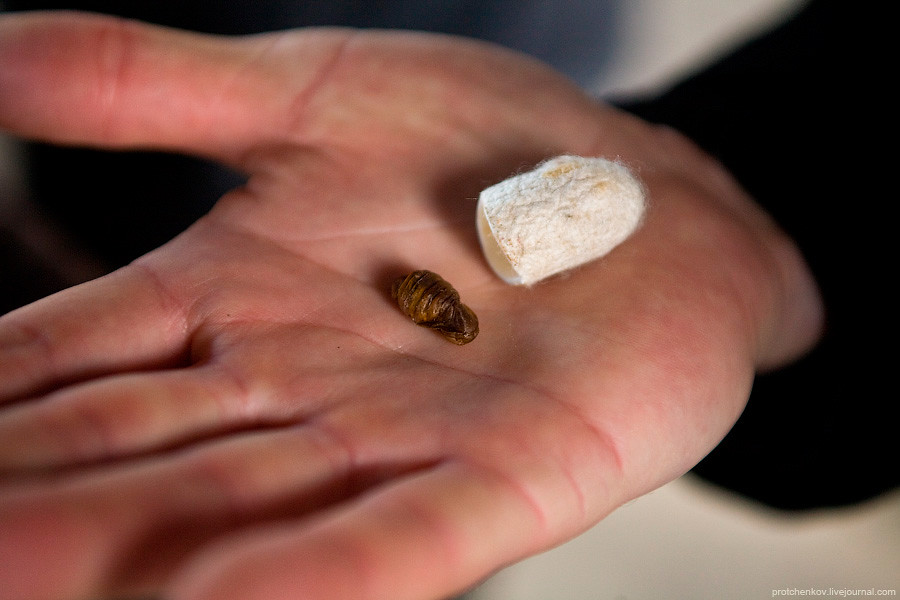
Stained ropes here in these vats.
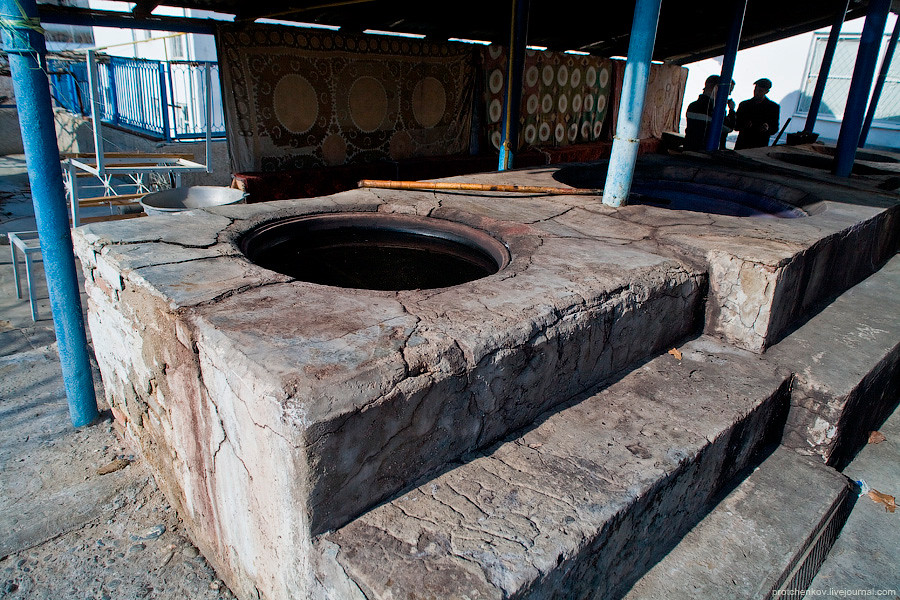
Despite the fact that it was a Saturday, work was in full swing.

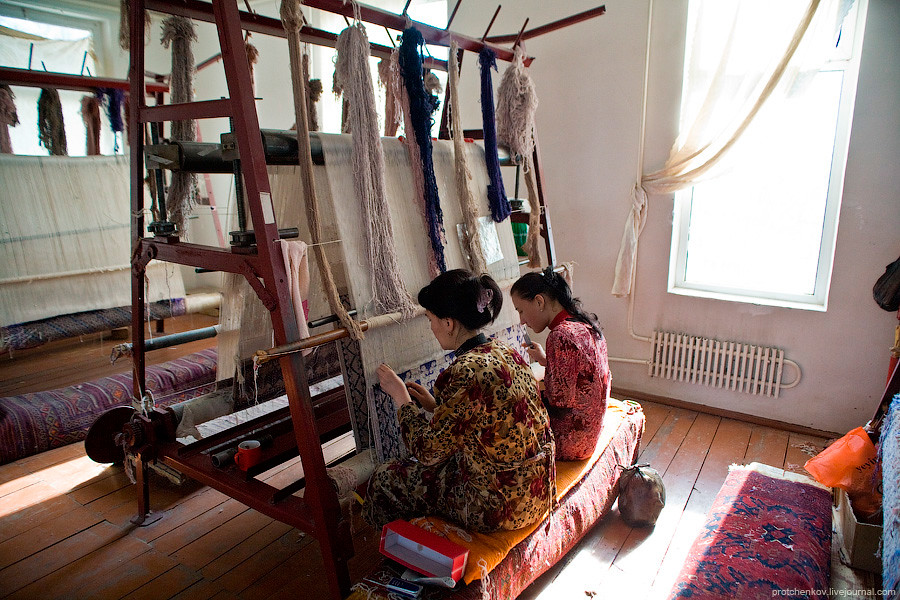
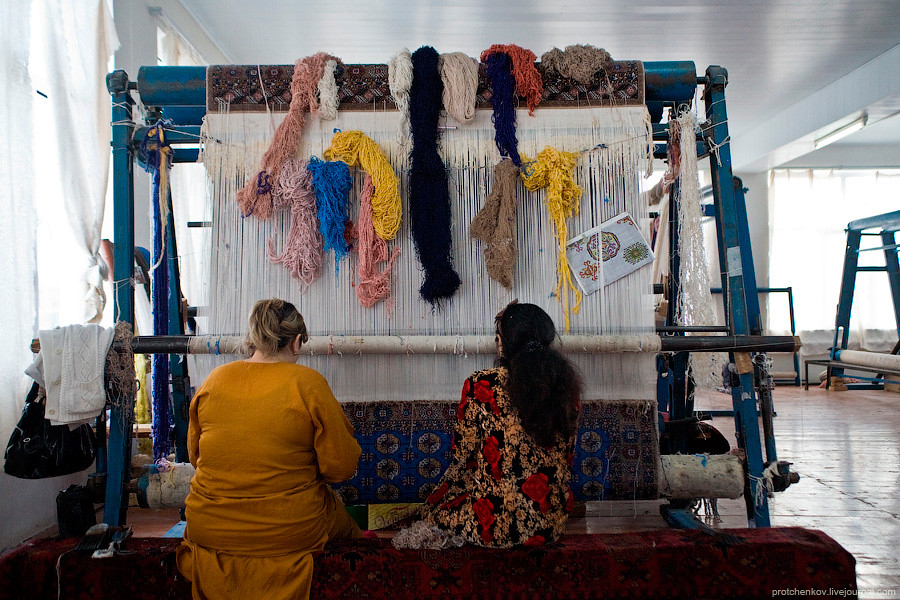
Carpets are doing here with such intricate patterns.
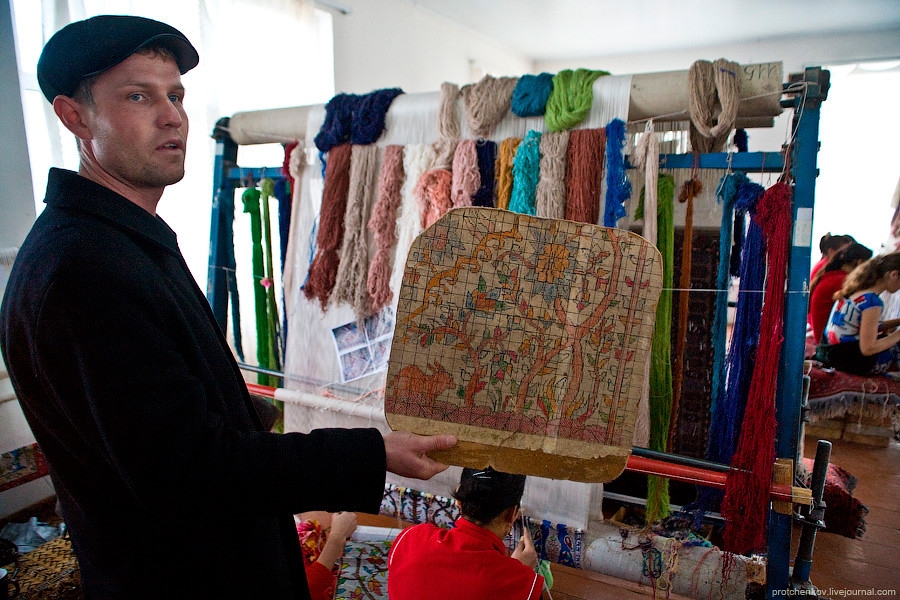
Well, if you want something really "exclusive", it can and on the photo to make a drawing.
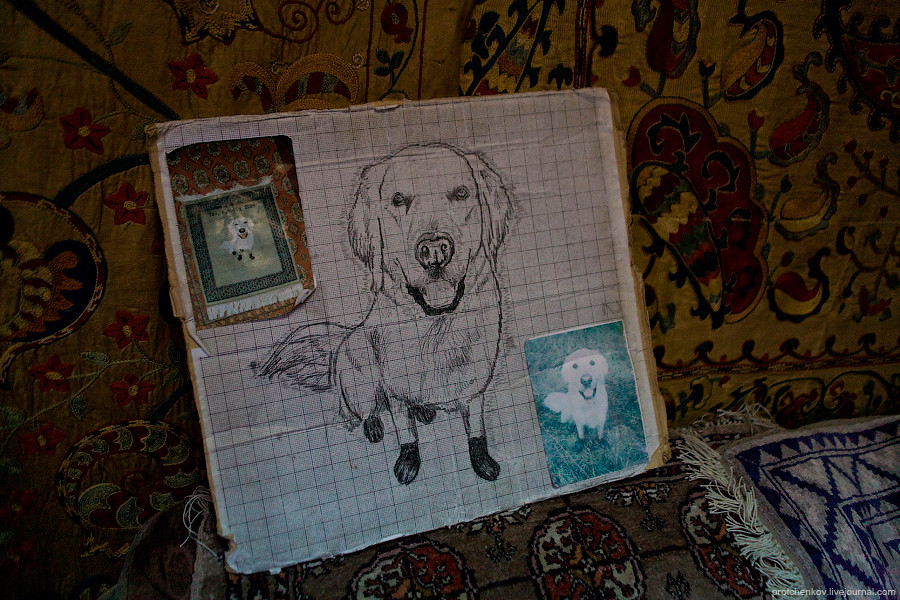
I think it's hellish work.
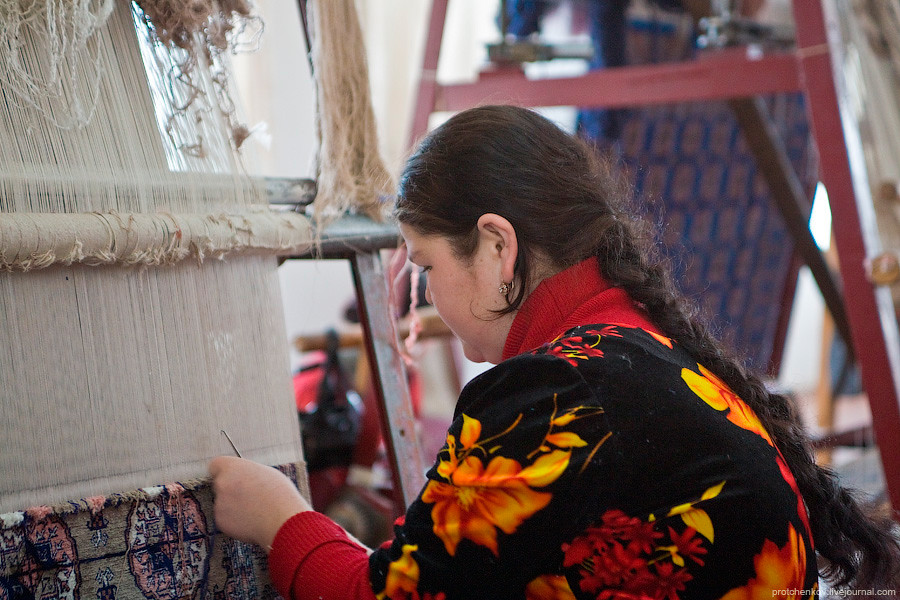
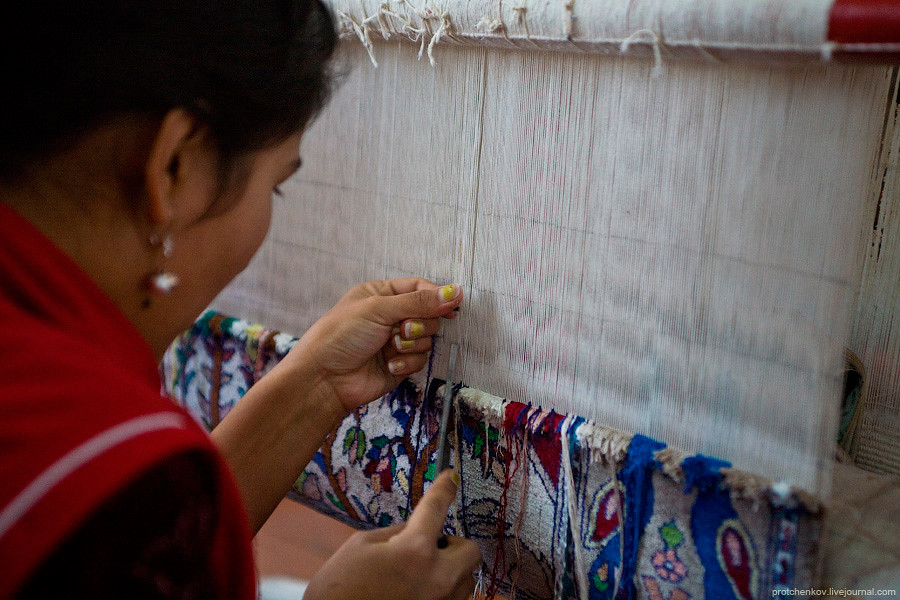
Carpet the more valuable the more it has the density of nodes, and of the more complex pattern. For example here in this blue 110 knots at kvadtatny centimeter. It costs $ 7000! Yes, yes, seven thousand dollars.
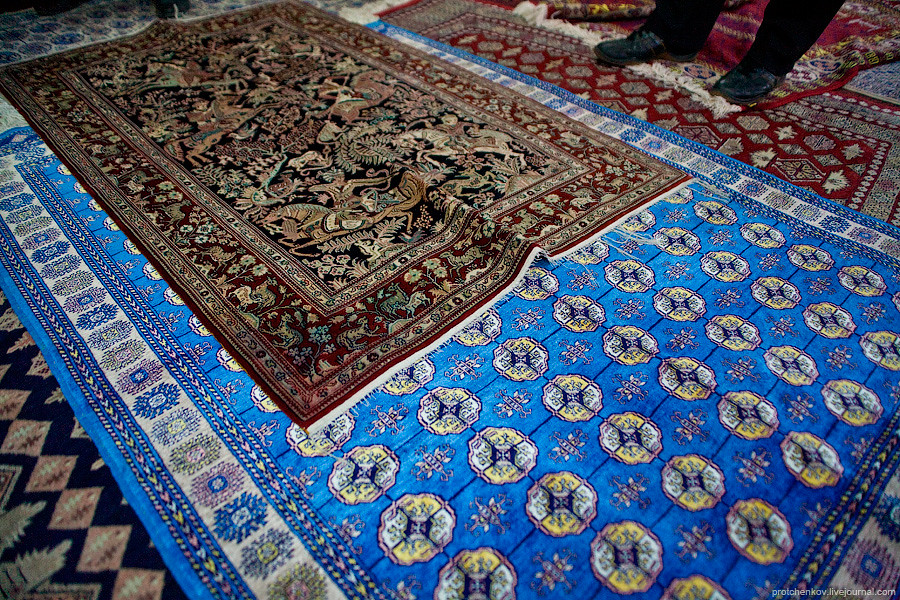
The density of the carpet - this is the screen resolution, such as mobile phones. You see what this big pixels. It is only 110 knots.
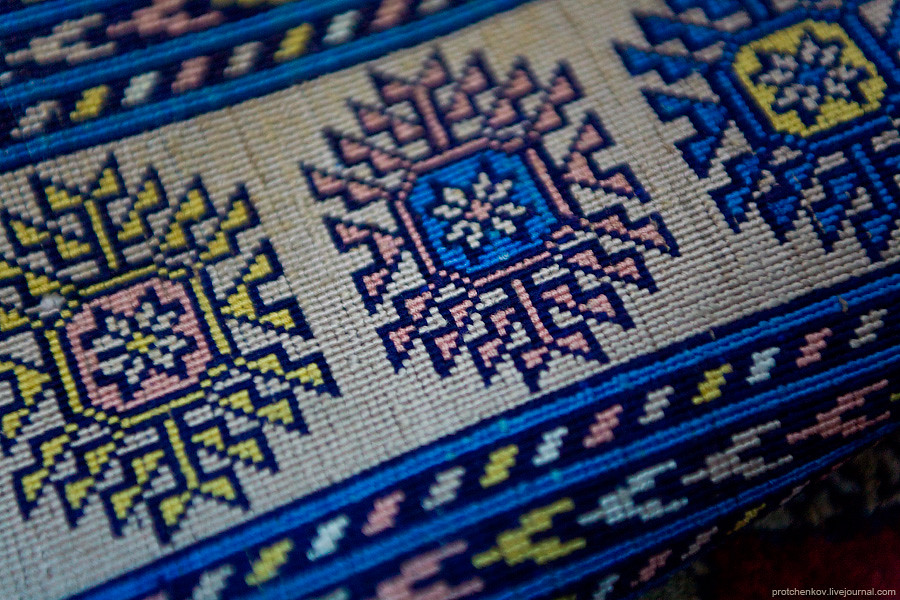
The resolution of this carpet - about 600 knots per square centimeter! If the previous carpet was VGA then this is just a HD quality.
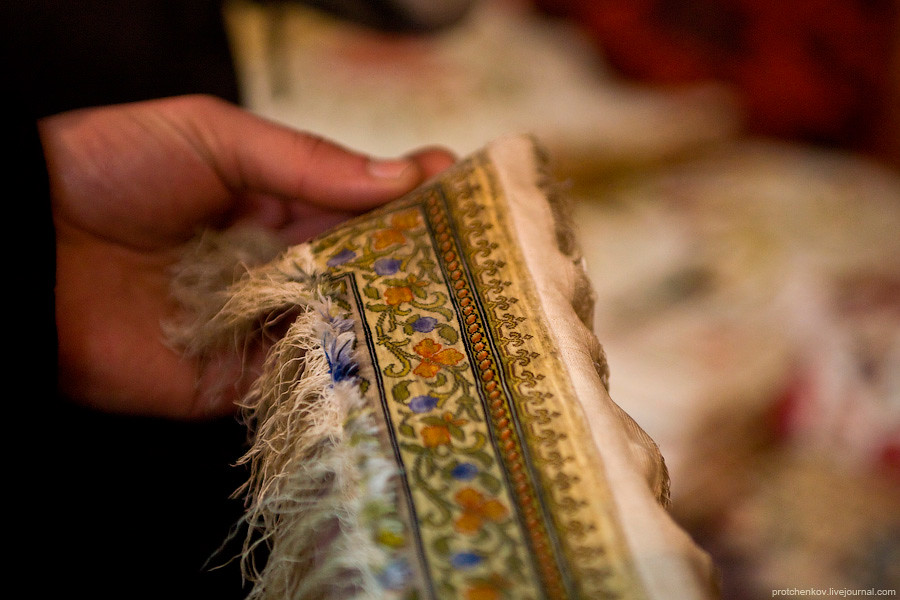
As explained to us - this is the only carpet with a density of them at the factory, and as you see it, they have recently begun. Special order, for some Japanese connoisseur.
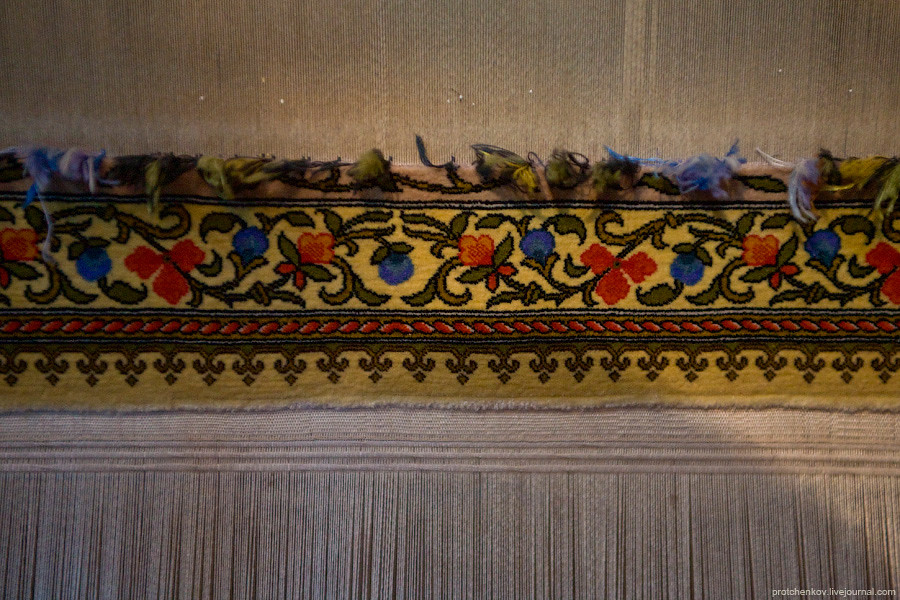
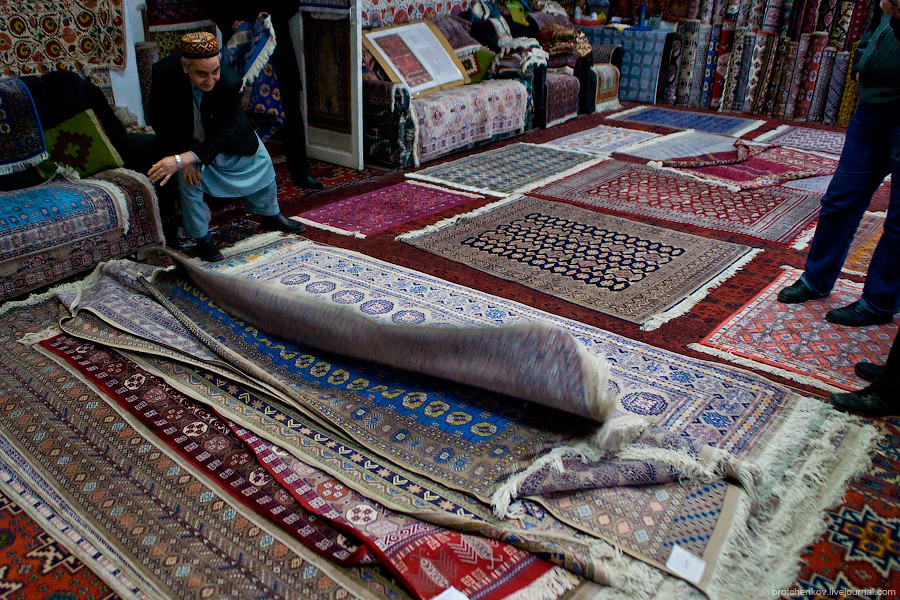
Even Sam was here.
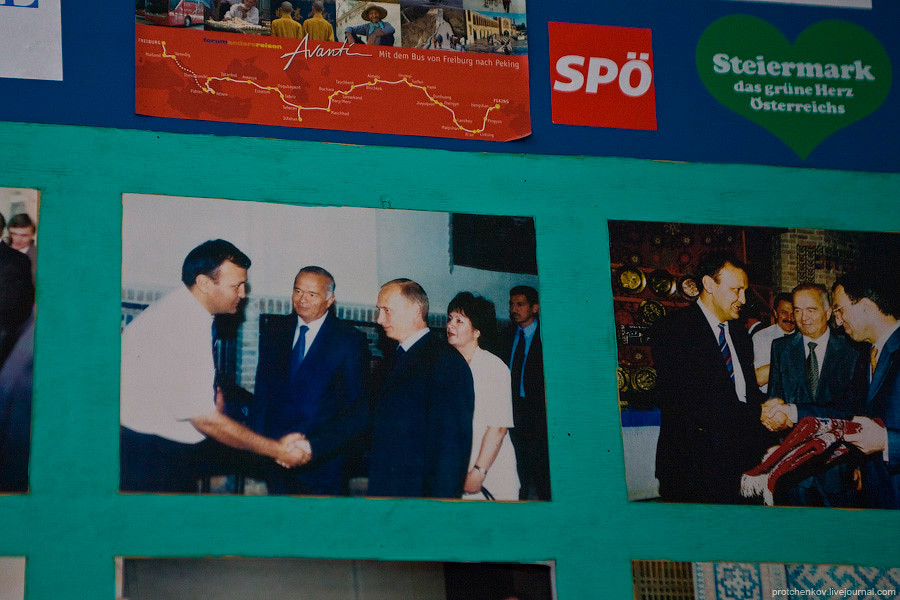
A dog was running around the plant. Dingy, but good-natured.
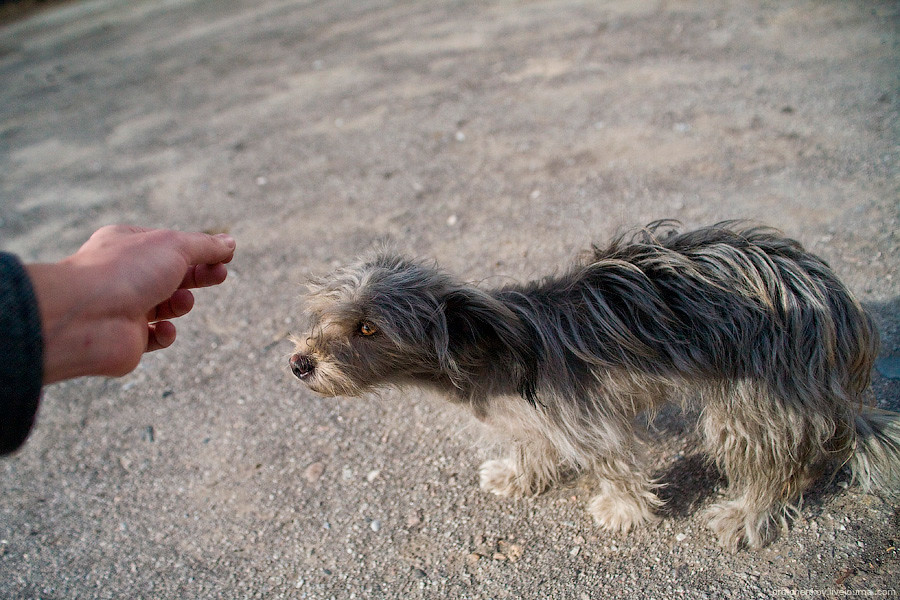
Friends, if you go to Samarkand, we can recommend the excellent guide - Denis Vikulov (denis-guide@rambler.ru). Denis recommended guide Lonely Planet, it has a car, he speaks English, and just a great guy.
Silk paper, used before the discovery of cheaper paper made from cellulose. Its production - still a manual process, so it is more expensive and used mainly for decorative purposes.

Carpets are made fully by hand. Prices are starting from a few thousand dollars.

Let's start with the paper. First, from the branches of the mulberry tree (the same, eats the leaves of which the silkworm, and then scat silk thread), remove the crust and remove the upper dark layer.


Then the bark is boiled for a long time in the vats, so that it becomes soft.

Softened by boiling the bark tolkut in a mortar to a state of porridge.

The mechanism is driven by a large shaft under the action of water flow in the creek. See the wheel at the far end? It is half submerged in water. Also thought lubrication system with water. This is a long thin beam to the main shaft - trough for water. It lubricates the friction of wood.

Porridge crust is dissolved in a large tub with water, and water and then sifted through a sieve.

As a result, a sieve is a thin, uniform layer of a future paper.

Wet yet nedolist nedobumagi just shake with a sieve.

These are the pieces of flattened and placed under the press for several days.

Paper from under the press out here like that. Now it is very rough. Therefore, it is sanded.

Grind large seashell.


Oem manufacturing small. Doing all sorts of paper crafts and prints at her book. They say that it serves dolshe than plain paper - about 200 years.


Now go to the carpet factory.

In the left bowl, silk cocoons. Cocoons - from woolen yarn, which wrapped itself when silkworms pupate. But pevratitsya gusinitsy of a butterfly they are not allowed. These cocoons are boiled for several hours, otcheno caterpillar dies, and a cocoon it becomes easier to unravel. Such is life.
In the other bowls - something with which then dyed silk. All natural dyes - some roots and leaves.

Here is the caterpillar. When the cocoon untangle from one obtained by a thin thread of a length of hundreds of meters. From this thread has spun a very strong silk rope.

Stained ropes here in these vats.

Despite the fact that it was a Saturday, work was in full swing.



Carpets are doing here with such intricate patterns.

Well, if you want something really "exclusive", it can and on the photo to make a drawing.

I think it's hellish work.


Carpet the more valuable the more it has the density of nodes, and of the more complex pattern. For example here in this blue 110 knots at kvadtatny centimeter. It costs $ 7000! Yes, yes, seven thousand dollars.

The density of the carpet - this is the screen resolution, such as mobile phones. You see what this big pixels. It is only 110 knots.

The resolution of this carpet - about 600 knots per square centimeter! If the previous carpet was VGA then this is just a HD quality.

As explained to us - this is the only carpet with a density of them at the factory, and as you see it, they have recently begun. Special order, for some Japanese connoisseur.


Even Sam was here.

A dog was running around the plant. Dingy, but good-natured.

Friends, if you go to Samarkand, we can recommend the excellent guide - Denis Vikulov (denis-guide@rambler.ru). Denis recommended guide Lonely Planet, it has a car, he speaks English, and just a great guy.
__._,_.___
No comments:
Post a Comment